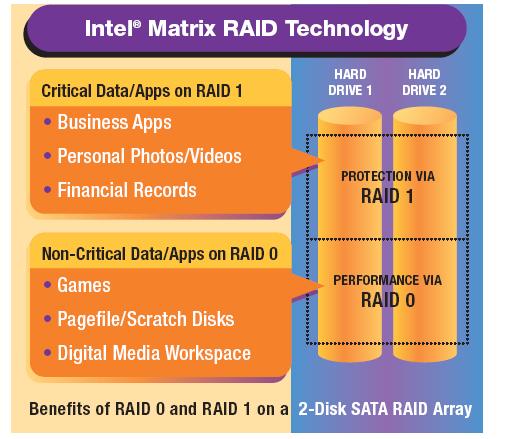Intel Goes Dual Graphics With 975X Chipset
Chewing Through Intel's Platform Technologies
Since the 975X is the top model in Intel's desktop core logic portfolio, it supports all platform technologies that have been around.
Hyper Threading
While this is not exactly a technology that is bound to the platform, it is an Intel feature that comes with all current Pentium 4 and Extreme Edition processors. Hyper Threading causes the Intel core to appear to the operating system as two physical processors. Whenever the operating system has work to do, its scheduler will send bits of it to the two available processing units; this helps to run the long Pentium 4 NetBurst pipeline more efficiently. There are only a few scenarios in the desktop space where Hyper Threading really improves performance, but it helps to make the system more responsive.
EM64T
Extended Memory 64 Technology (EM64T) is nothing more than Intel's version of the 64 bit mode that AMD introduced with AMD64. Every 64 bit enabled desktop processor is capable of running 32 bit or 64 bit operating systems today. Again, this is more a processor than a platform feature.
Execute Disable (XD) Bit
Once more, this feature is processor-related. The XD bit requires some assistance from Windows XP by means of the current Service Pack 2; it allows for main memory areas to be marked as non executable (hence AMD calls this feature NX or Non-Execute). The reason for doing this mainly is to combat so-called "buffer overflows" that malicious software such as virus can cause. If more data is written into a memory space than it was designed for - just think of a variable in a program - this can overwrite subsequent memory areas. Malicious software could do this deliberately to insert code and then run it.
Get Tom's Hardware's best news and in-depth reviews, straight to your inbox.
Enhanced Intel SpeedStep Technology (EIST)
EIST is mostly is a processor feature again. SpeedStep allows the operating system to reduce the processor speed dynamically in order to reduce heat dissipation and power consumption. As soon as the workload rises, the clock speed will be switched up again. SpeedStep was first introduced with Intel's Mobile Pentium III processors roughly five years ago. The firm was almost forced to introduce it into the desktop space, due to the high power consumption and thermal profiles of the current Pentium 4 and Pentium D processors.
Intel Memory Pipeline Technology
Finally, this is a platform feature and it is one of very few differentiators between the enthusiast/workstation chipsets 925/955 and their mainstream brothers 915/945. It introduces several tweaks to reduce memory latency.
Intel Matrix Storage Technology
Intel introduced on-chip RAID support back when 865 and 875 were brought out. However, with the introduction of the ICH6R, the RAID layer became powerful enough to deploy two different RAID arrays onto the same set of drives. For example, you can have a RAID 0 hosting your operating system, plus a RAID 1 to store your data. With ICH7R, RAID 5 support was added, too. Remember that you need at least three drives to run this redundant array type, and that the overall performance will be clearly inferior when compared to the simple RAID modes.
Intel Active Management Technology
Active Management is a system addition that is interesting mainly for corporate users. Intel has lots of information on its website, so there is not much need to go into the details:
http://www.intel.com/technology/manage/iamt/
Flex Memory permits flexible memory configuration. However, we recommend always equipping two or four DIMMs in order to run conventional dual channel mode; this is still the fastest option.
Current page: Chewing Through Intel's Platform Technologies
Prev Page The Dual Graphics Story Next Page Test Motherboard: Gigabyte GA-G1975X
Patrick Schmid was the editor-in-chief for Tom's Hardware from 2005 to 2006. He wrote numerous articles on a wide range of hardware topics, including storage, CPUs, and system builds.


